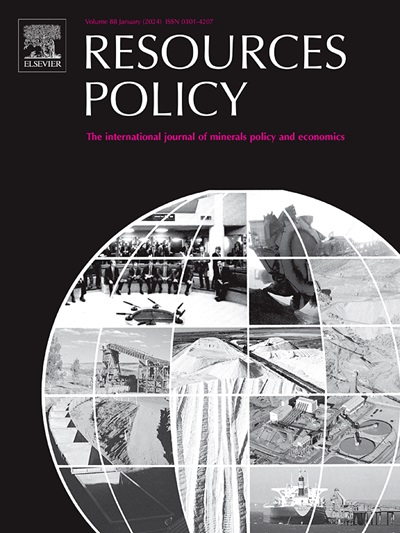Metal mining decarbonisation scenarios – Ontario's path towards net zero GHG emissions
IF 10.2
2区 经济学
0 ENVIRONMENTAL STUDIES
引用次数: 0
Abstract
Mining is crucial for providing minerals to meet decarbonisation goals to restrict global temperature increases as proposed in the Paris Agreement. To ensure alignment with Paris Agreement objectives, some mining companies have set decarbonisation targets for 30 % greenhouse gas (GHG) emission reduction by 2030 and net zero emissions by 2050. Consequently, mining companies have developed decarbonisation roadmaps. The purpose of this study is to investigate the current and future GHG emission profiles of mines along with the impact of implementing the main technologies included in these decarbonisation roadmaps. A model was developed to assess various strategies for reaching climate change targets. The study was limited to Ontario metal mines, where 14 scenarios with varying technology adoption rates were modeled. The decarbonisation technologies investigated in this study included battery electric vehicles (BEVs), ventilation control strategies (VCS), and general energy management. Results showed that the 30 % GHG emission reduction is achieved between 2032 and 2035 for the more optimistic scenarios, or from 2038 to 2040 for the more conservative cases. GHG emission reductions in 2050 range from 67 to 74 % where displacing diesel equipment with battery electric vehicles (BEVs) was the initiative that produced the largest impact. Results showed that continued adoption of existing technologies and low emission grid electricity could significantly impact the mining sector GHG emission profile, however additional decarbonisation measures and efforts from various stakeholders will be required to reach established targets.
金属采矿脱碳情景——安大略省实现温室气体净零排放的道路
采矿业对于提供矿物以实现《巴黎协定》提出的限制全球气温上升的脱碳目标至关重要。为了确保与《巴黎协定》的目标保持一致,一些矿业公司制定了到2030年减少30%温室气体(GHG)排放和到2050年实现净零排放的脱碳目标。因此,矿业公司制定了脱碳路线图。本研究的目的是调查矿山当前和未来的温室气体排放概况,以及实施这些脱碳路线图中包括的主要技术的影响。开发了一个模型来评估实现气候变化目标的各种战略。这项研究仅限于安大略省的金属矿山,在那里模拟了14种不同技术采用率的情景。本研究调查的脱碳技术包括电池电动汽车(bev)、通风控制策略(VCS)和一般能源管理。结果表明,在较乐观的情景下,温室气体减排30%在2032 - 2035年之间实现,而在较保守的情景下,则在2038 - 2040年之间实现。到2050年,温室气体排放量将减少67%至74%,其中电池电动汽车(bev)取代柴油设备是产生最大影响的举措。结果表明,继续采用现有技术和低排放电网电力可能会显著影响采矿业的温室气体排放情况,但要达到既定目标,还需要各利益相关者采取额外的脱碳措施和努力。
本文章由计算机程序翻译,如有差异,请以英文原文为准。
求助全文
约1分钟内获得全文
求助全文
来源期刊

Resources Policy
ENVIRONMENTAL STUDIES-
CiteScore
13.40
自引率
23.50%
发文量
602
审稿时长
69 days
期刊介绍:
Resources Policy is an international journal focused on the economics and policy aspects of mineral and fossil fuel extraction, production, and utilization. It targets individuals in academia, government, and industry. The journal seeks original research submissions analyzing public policy, economics, social science, geography, and finance in the fields of mining, non-fuel minerals, energy minerals, fossil fuels, and metals. Mineral economics topics covered include mineral market analysis, price analysis, project evaluation, mining and sustainable development, mineral resource rents, resource curse, mineral wealth and corruption, mineral taxation and regulation, strategic minerals and their supply, and the impact of mineral development on local communities and indigenous populations. The journal specifically excludes papers with agriculture, forestry, or fisheries as their primary focus.
 求助内容:
求助内容: 应助结果提醒方式:
应助结果提醒方式:


